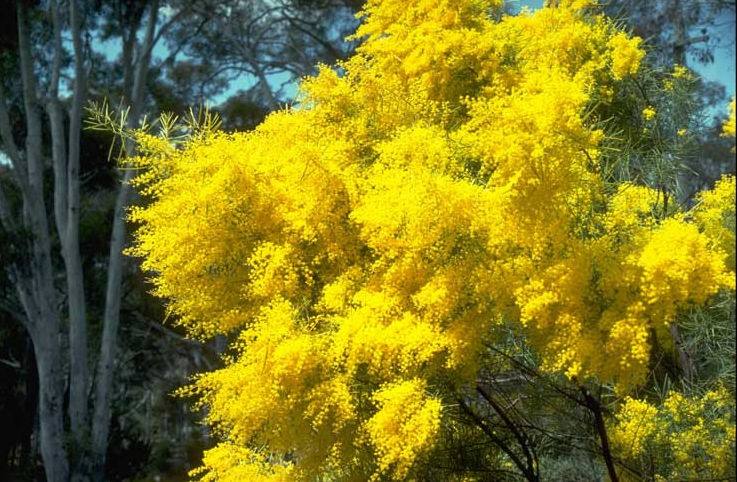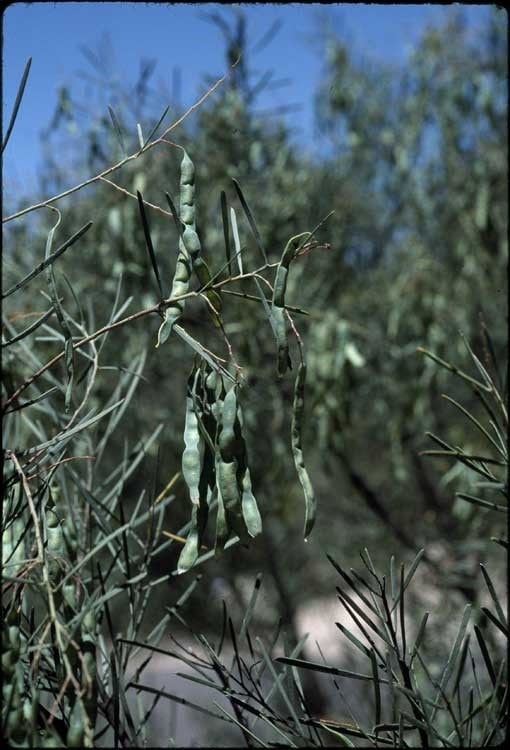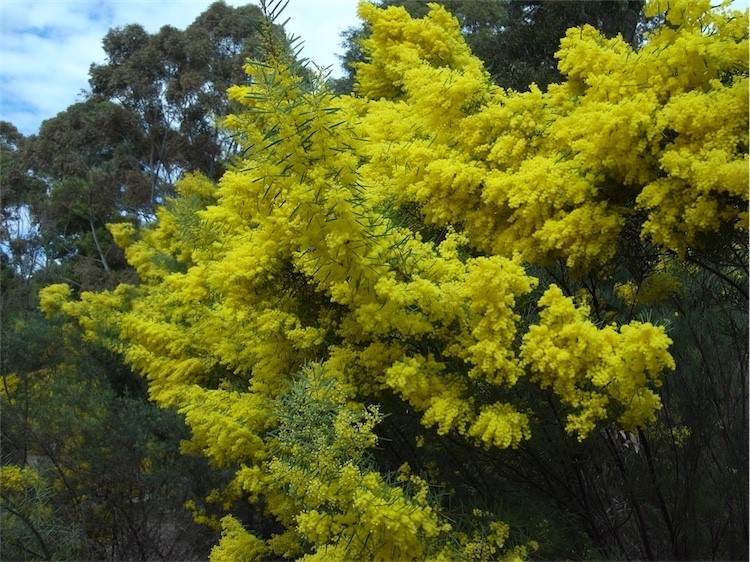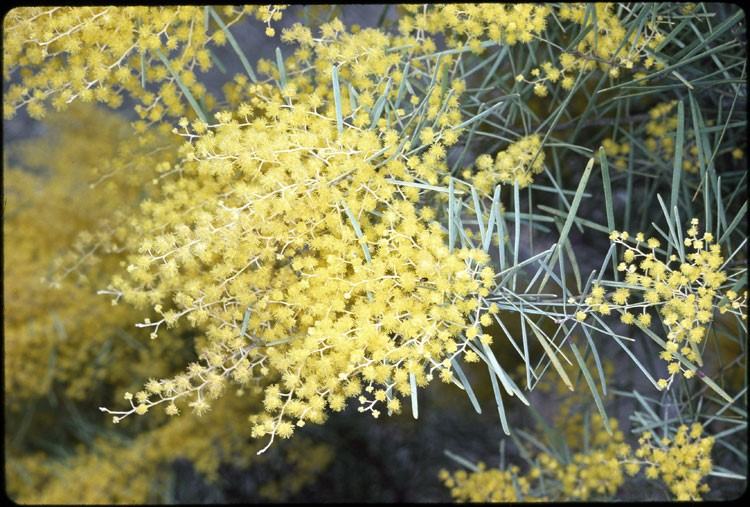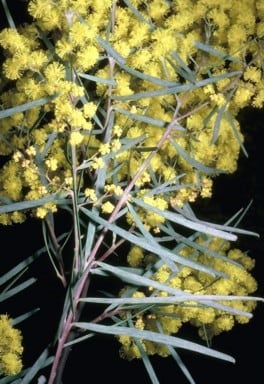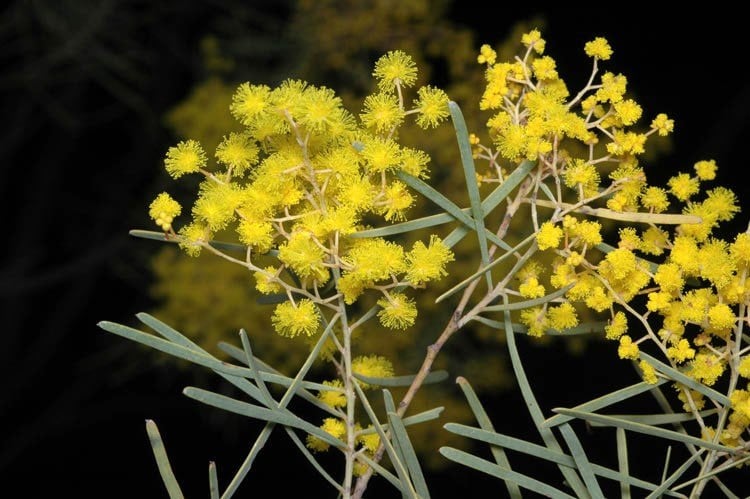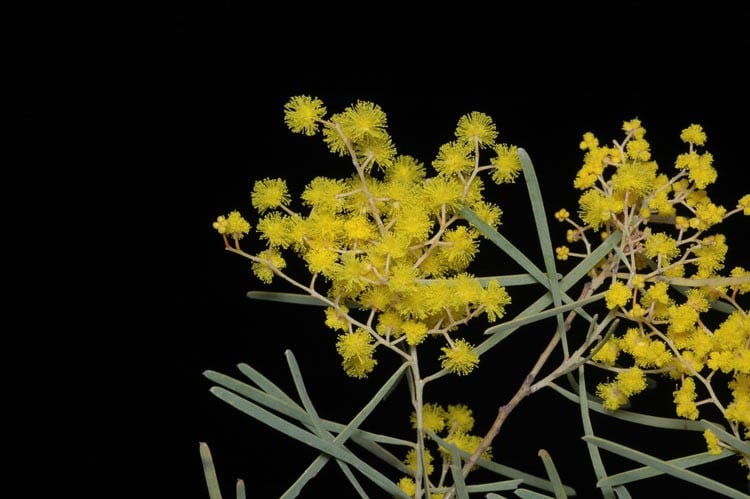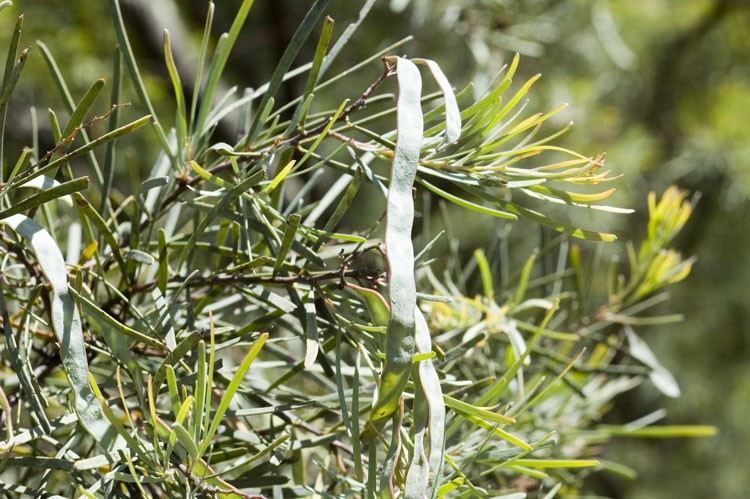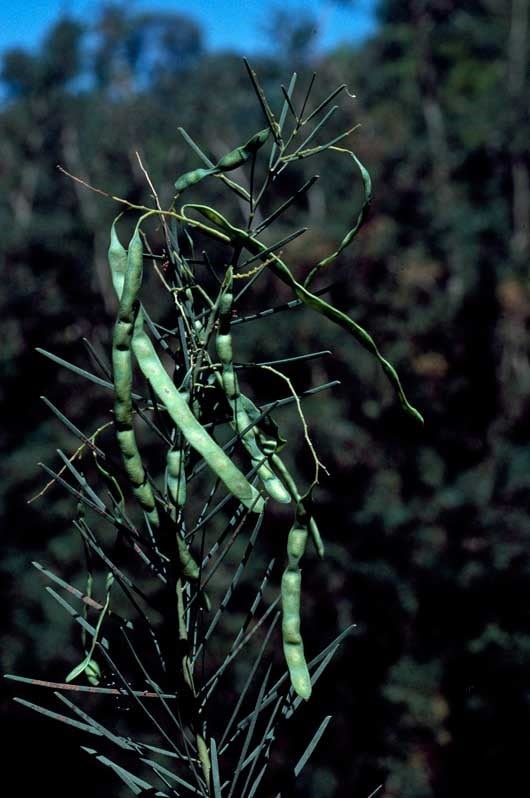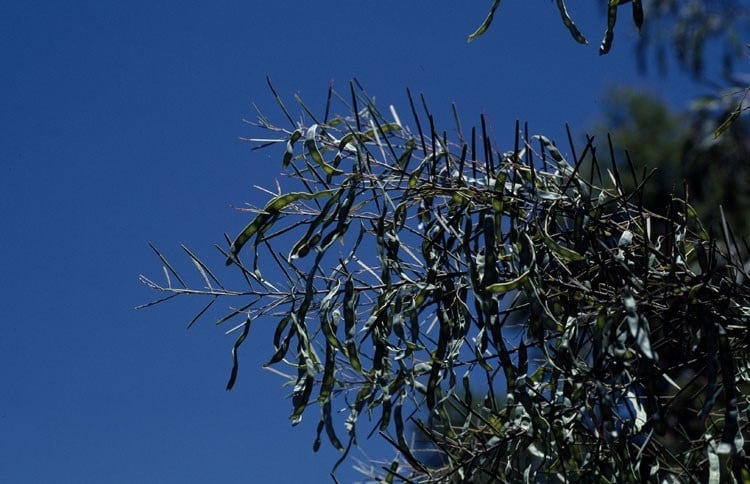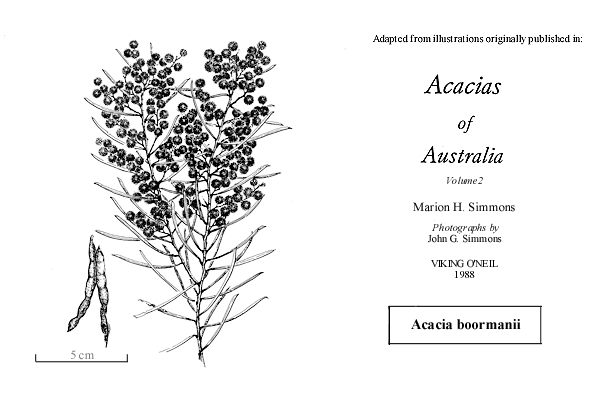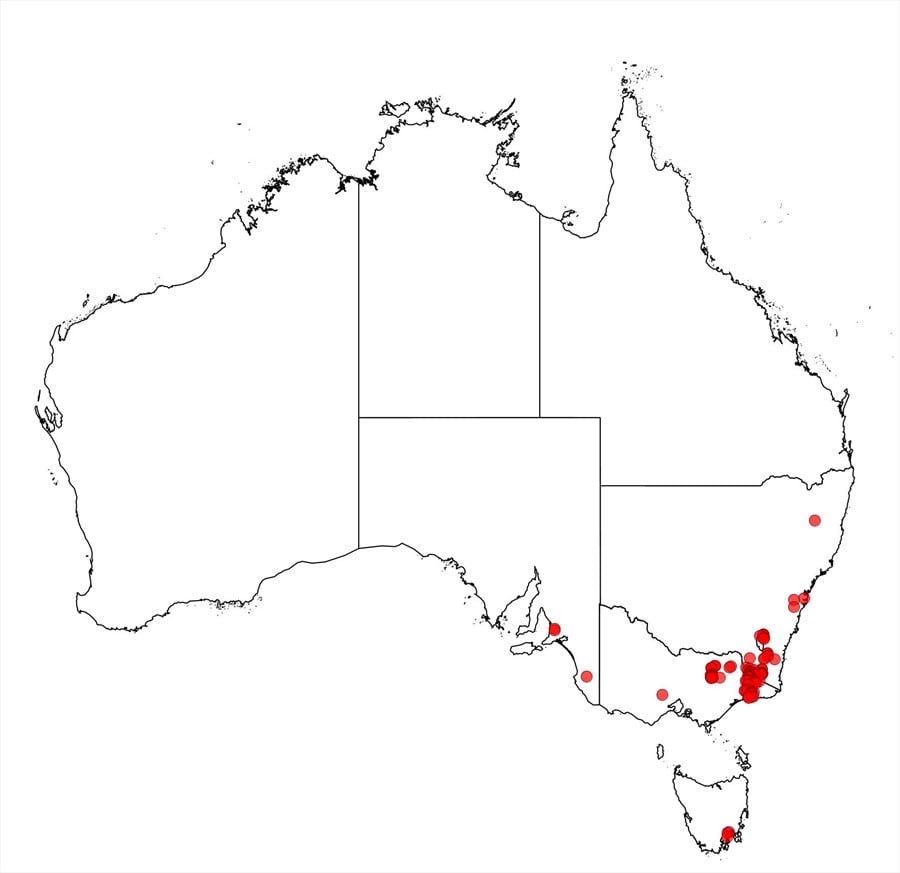Acacia boormanii Maiden
WATTLE
Acacias of Australia
Common Name
Snowy River Wattle
Family
Fabaceae
Distribution
Occurs principally from S of Thredbo Village, N.S.W., S to Buchan, Vic.; naturalized in A.C.T. Further occurrences at Macanally Mtn near Cooma, N.S.W., and variants at Mt Typo and Gapsted, near Myrtleford, Vic.
Description
Bushy shrub (0.5–) 1–4 (–6) m high, readily coppicing. Branchlets often faintly pruinose at extremities, glabrous. Phyllodes patent to erect, sometimes deflexed, narrowly linear, flat, (2.5–) 3–6.5 (–8) cm long, usually (0.5–) 1–2 mm wide, narrowed at base, normally obliquely and excentrically mucronate, thin, usually green to grey-green, glabrous except pulvinus often sparsely hirsutellous adaxially; midrib and lateral nerves indistinct; gland not prominent, 2–16 mm above pulvinus. Inflorescences 5–10-headed racemes; raceme axes 1–4 (–6) cm long, slender, straight to flexuose, glabrous to subglabrous, slightly pruinose especially when young; peduncles 2–4 (–7) mm long, slender, glabrous to subglabrous; heads prolific, globular, 6–8 mm diam. (dry), 5–10-flowered, golden. Flowers 5‑merous; sepals united. Pods linear, to 9 cm long, 4–6.5 mm wide, firmly chartaceous, glabrous, dehiscing unilaterally. Seeds longitudinal, oblong-elliptic, 4.5–5 mm long, ±shiny, black; aril 1/2–2/3 length of seed.
Specimens
N.S.W.: Cowra Ck, Cooma, R.H.Cambage 1878 (NSW); Snowy R., 56 km SSW of Jindabyne, J.Pickard & R.Coveny 2756 (PERTH). Vic.: Snowy R. Track, 1.5 km from Snowy R., 7 km SE of Mt Menaak, H.van Rees 041 (NSW, PERTH).
Notes
The dwarf variant from Splitters Ck, Vic., noted under A. boormanii by B.R.Maslin, Fl. Australia 11A: 334 (2001) is now described as A. infecunda. Other dwarf taxa, A.nanopravissima and A. tabula, also occur at Splitters Ck.
A variant from Mt Typo, c. 50 km SSW of Myrtleford, Vic., known by the phrase name Acacia boormanii var. Mount Typo (F.E.Bienvenu 11), is recognised especially by its phyllodes which are normally broader than normal (mostly 3–5 mm wide) and are distinctly glaucous when young (e.g. F.E.Bienvenu T12, PERTH). This variant requires further study. It seemingly hybridises with A. pravissima (e.g. F.E.Bienvenu 0013, MEL; this putative hybrid resembles A. semibinervia), may resemble narrow phyllode forms of A. kettlewelliae but is distinguished by its narrower pods (c. 5 mm wide) and insignificant gland. Plants from Gapsted, W of Myrtleford, Vic., are morphologically similar, but unpublished chemical data suggests that they differ from both ‘typical’ A. boormanii and the Mt Typo variant (e.g. F.E.Bienvenu 0023, MEL). Mt Typo and Gapsted are about 150 km W of the main occurrence of A. boormanii. Deflexed phyllodes, which are sometimes seen in A. boormanii, also occasionally occur in the long phyllode variant of A. kybeanensis.
An ornamental species which is spectacular when in bloom. Useful as a windbreak or screening plant especially if use is made of its suckering habit.
Similar to A. linifolia which has a more open habit, creamy yellow heads and broader pods.
FOA Reference
Data derived from Flora of Australia Volumes 11A (2001), 11B (2001) and 12 (1998), products of ABRS, ©Commonwealth of Australia
Author
B.R.Maslin
Edited by B.R.Maslin
This identification key and fact sheets are available as a mobile application:
URL: https://apps.lucidcentral.org/wattle/
© Copyright 2018. All rights reserved.
